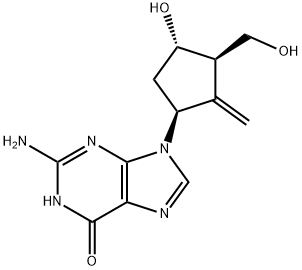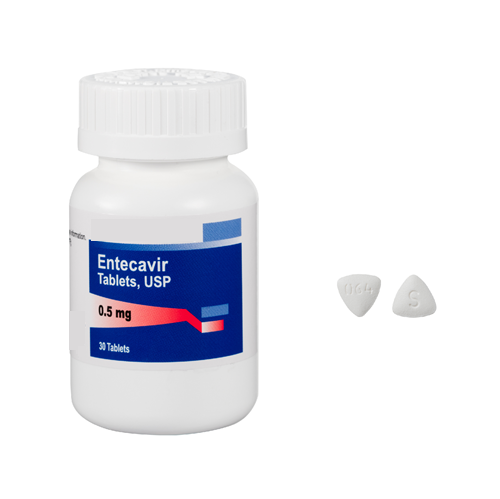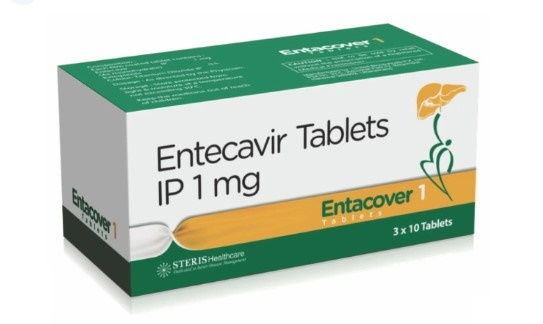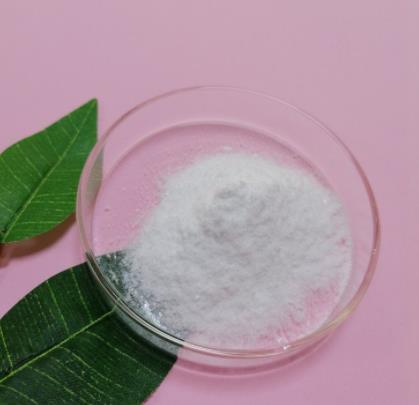Entecavir: Highly Effective Antiviral Drug for Hepatitis B Treatment
General Description
Entecavir is a highly effective and widely used antiviral drug for the treatment of chronic hepatitis B (CHB) infection. It works by inhibiting viral replication through its active form, Entecavir-triphosphate. With rapid absorption and good bioavailability, Entecavir achieves steady levels after 6-10 days of once-daily administration. It is primarily eliminated by the kidneys and has a half-life of approximately 15 hours. Common side effects include headache, insomnia, fatigue, and gastrointestinal symptoms. While Entecavir has a low resistance rate in treatment-naïve patients, resistance can develop in non-naïve patients, especially those previously resistant to lamivudine. Monitoring viral load and considering combination or alternate therapies is important in managing resistance.
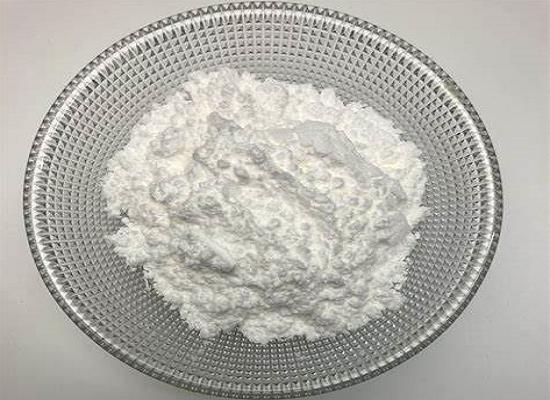
Figure 1. Entecavir
Overview
Entecavir is a potent compound used for the treatment of hepatitis B virus (HBV) infection, particularly chronic hepatitis B (CHB). CHB is a global health issue that affects around 296 million people worldwide, with 95% of cases related to vertical or horizontal transmission during childhood. In 2019, HBV caused nearly 820,000 deaths, mainly due to CHB cases leading to cirrhosis or liver tumors. As a result, there is a pressing need for effective treatments for this disease. The first drug approved for CHB was interferon-alpha in 1991, followed by oral therapies such as lamivudine, adefovir, Entecavir, telbivudine, and tenofovir. Entecavir was approved by the FDA in 2005 and subsequently received approval from regulatory agencies in Europe, Japan, and China. It is available in over 70 countries and is listed on the WHO List of Essential Medicines. Entecavir has therapeutic indications for the treatment of HBV infection, specifically as a first-line treatment for CHB in adult and pediatric patients aged over 2 years. The recommended dosage is 0.5 mg or 1 mg once daily, available as a tablet and oral solution. The most common side effects include headache, insomnia, fatigue, dizziness, somnolence, vomiting, diarrhea, nausea, dyspepsia, and increased liver enzymes. 1
Pharmacological Properties
Entecavir is an antiviral drug with activity against the hepatitis B virus polymerase. It is a guanosine nucleoside analogue that undergoes intracellular phosphorylation, converting it into its active form, Entecavir-triphosphate. This active form competes with deoxyguanosine triphosphate, a natural substrate of the HBV reverse transcriptase, and inhibits various stages of viral replication that rely on polymerase activity. The pharmacokinetic properties of Entecavir include rapid absorption, with peak plasma concentrations reached within 0.5-1.5 hours. The bioavailability is at least 70%, and steady state levels are achieved after 6-10 days of once-daily administration. Entecavir is extensively distributed in tissues and has low binding to human serum proteins (13%). It is not metabolized by cytochrome P450 enzymes and does not act as a substrate, inhibitor, or inducer of these enzymes. Entecavir is predominantly eliminated by the kidneys through glomerular filtration and tubular secretion. The half-life of the phosphorylated metabolite is approximately 15 hours. In general, Entecavir is well tolerated; however, caution should be exercised when coadministering with drugs that may reduce renal function due to its primarily renal excretion. 2
Antiviral Resistance
Antiviral resistance is a concern that can arise with prolonged administration of antiviral therapies, including Entecavir for chronic hepatitis B (CHB). Certain antiviral drugs, such as lamivudine and adefovir, have a low genetic barrier to resistance, making them more susceptible to resistance development. When viral mutations occur, they alter the interaction between the viral polymerase and the drug, reducing the drug's inhibitory effect on the hepatitis B virus polymerase. In treatment-naïve patients, Entecavir has a low resistance rate, below 1% after two years of treatment. However, resistance is more common in non-naïve patients, especially those resistant to lamivudine. Combination therapy with Entecavir and tenofovir or monotherapy with tenofovir may be recommended for patients who develop resistance. Monitoring the viral load is crucial in controlling the development of resistance, particularly in patients with high initial viral loads. The use of antivirals with low resistance barriers may contribute to the increase in Entecavir resistance observed in recent years. In summary, while Entecavir exhibits a low antiviral resistance rate, it is essential to monitor viral load and consider combination or alternate therapies in patients at risk of resistance development. 3
Reference
1. Tang H, Griffin J, Innaimo S, Lehman-Mckeeman L, Llamoso C. The Discovery and Development of a Potent Antiviral Drug, Entecavir, for the Treatment of Chronic Hepatitis B. J Clin Transl Hepatol. 2013;1(1):51-58.
2. Entecavir. National Center for Biotechnology Information (2024). PubChem Compound Summary for CID 135398508.
3. Louren?o T, Vale N. Entecavir: A Review and Considerations for Its Application in Oncology. Pharmaceuticals (Basel). 2023;16(11):1603.
You may like
Related articles And Qustion
Lastest Price from Entecavir manufacturers

US $0.00/kg2025-11-27
- CAS:
- 142217-69-4
- Min. Order:
- 1kg
- Purity:
- 98%
- Supply Ability:
- Customise

US $0.00/g2025-04-21
- CAS:
- 142217-69-4
- Min. Order:
- 1g
- Purity:
- 99%min
- Supply Ability:
- 1000g
